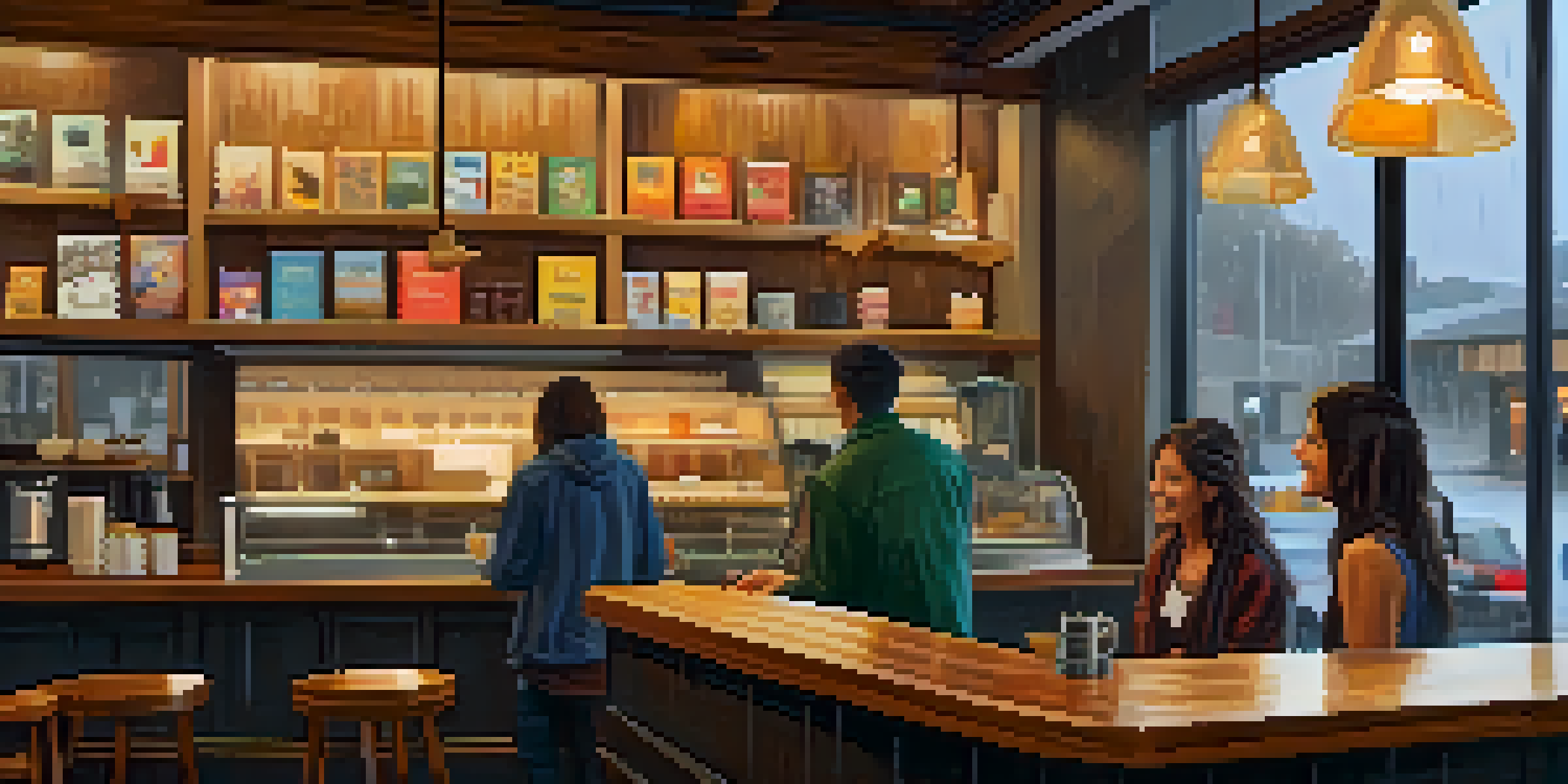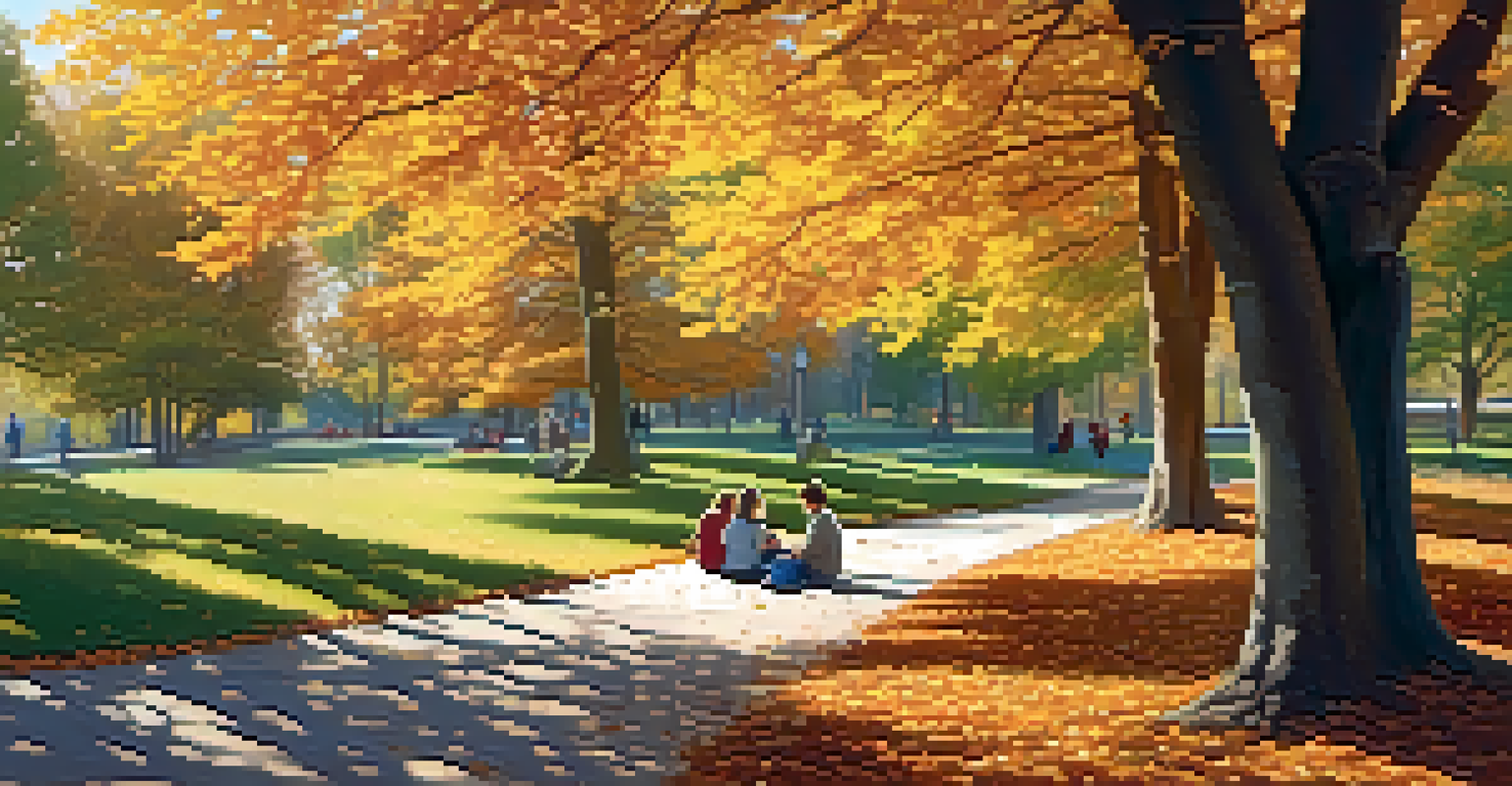The Evolution of LGBTQ+ Representation in Film History

Early Representations: Stereotypes and Shadows
In the early days of cinema, LGBTQ+ characters often existed in the shadows, portrayed through stereotypes. These characters were frequently depicted as villains or tragic figures, reinforcing negative perceptions and societal biases. For instance, films like 'The Children's Hour' from 1961 showcased the devastating effects of homophobia, yet they often lacked depth and nuance.
The most important thing to remember is that LGBTQ+ people are just people. They want to be seen, heard, and understood, just like everyone else.
During this period, the Hays Code severely restricted how LGBTQ+ themes could be presented on screen. This led to coded language and subtext that only audiences in the know could decipher. While this created a sense of community for some, it also meant that many LGBTQ+ stories remained untold and unrecognized.
Despite these challenges, certain films began to push boundaries, hinting at LGBTQ+ experiences in ways that resonated with viewers. These early representations set the stage for a gradual evolution, highlighting the need for genuine and respectful portrayals.
The 1970s: A Turning Point in Visibility
The 1970s marked a significant turning point in LGBTQ+ representation, coinciding with the rise of the gay rights movement. Films like 'The Boys in the Band' (1970) offered a more authentic glimpse into gay life, showcasing complex characters and relationships. This was a departure from previous depictions, allowing audiences to see LGBTQ+ individuals as fully realized people rather than mere caricatures.

This decade also saw the emergence of more openly queer filmmakers, who began to tell their own stories. Directors like Gus Van Sant brought raw, honest narratives to the forefront, capturing the struggles and joys of LGBTQ+ life. These films resonated with both LGBTQ+ audiences and allies, fostering a greater understanding of diverse experiences.
Evolving LGBTQ+ Representation
LGBTQ+ characters have shifted from negative stereotypes to more authentic portrayals, reflecting a broader spectrum of experiences.
However, while visibility increased, many films still leaned into stereotypes, often sensationalizing LGBTQ+ experiences. This juxtaposition highlighted the ongoing need for genuine storytelling that reflects the true diversity within the community.
The 1980s: AIDS Crisis and Its Impact on Film
The 1980s brought about an urgent and tragic chapter in LGBTQ+ history with the AIDS crisis. This public health emergency was depicted in films like 'Philadelphia' (1993), which humanized the struggle of those affected by the disease. Such narratives played a crucial role in raising awareness and fostering empathy, although they often centered on suffering rather than joy.
Storytelling is the most powerful way to put ideas into the world today.
Despite the focus on tragedy, this era also sparked a greater demand for representation and authenticity in storytelling. Artists and filmmakers began to explore the complexities of LGBTQ+ life, showcasing not only the challenges but also the resilience of the community. This shift was vital in shaping public perceptions and attitudes towards LGBTQ+ individuals.
Moreover, the 1980s laid the groundwork for future filmmakers to tell stories that intersected with LGBTQ+ identities and broader societal issues. The push for more nuanced representations was beginning to take root, signaling hope for the future of LGBTQ+ cinema.
The 1990s: Mainstream Acceptance and Diversity
As the 1990s rolled in, LGBTQ+ representation in film started to gain mainstream acceptance. Movies like 'The Birdcage' (1996) showcased LGBTQ+ characters in a more humorous, relatable light. This shift helped audiences see LGBTQ+ individuals as part of everyday life rather than as outsiders or tragic figures.
The decade also introduced a wider range of stories, from romantic comedies to dramas that explored the spectrum of LGBTQ+ experiences. Films such as 'Pride' (2014) began to highlight intersectionality within the community, recognizing that LGBTQ+ individuals come from diverse backgrounds and face unique challenges.
Impact of the AIDS Crisis
The AIDS crisis of the 1980s prompted filmmakers to humanize LGBTQ+ struggles, leading to greater empathy and demand for authentic narratives.
However, while visibility improved, many films still struggled with authenticity. The need for diverse voices within filmmaking became increasingly clear, emphasizing the importance of representation behind the camera as much as in front of it.
The 2000s: Breaking Barriers and Expanding Narratives
The 2000s witnessed a remarkable expansion in narratives surrounding LGBTQ+ identities, with films like 'Brokeback Mountain' (2005) achieving critical acclaim. This film broke traditional norms by presenting a complex love story between two men, earning recognition and sparking conversations about LGBTQ+ representation in Hollywood. It was a pivotal moment, showcasing that queer stories could resonate deeply with mainstream audiences.
As LGBTQ+ voices gained traction, filmmakers began to explore a wider array of experiences, including those of transgender individuals and queer people of color. Films like 'Moonlight' (2016) not only won prestigious awards but also highlighted the importance of intersectionality, emphasizing that LGBTQ+ experiences are not monolithic.
Despite this progress, discussions around representation continued, with many advocates calling for more authentic storytelling. The push for inclusivity in film became a rallying cry, advocating for stories that reflect the true diversity of the LGBTQ+ community.
The 2010s: A Wave of Diverse LGBTQ+ Stories
The 2010s marked a significant wave of diverse LGBTQ+ stories, with films like 'Call Me by Your Name' (2017) and 'Love, Simon' (2018) capturing hearts worldwide. These films not only portrayed LGBTQ+ love stories but also emphasized the importance of self-acceptance and understanding, resonating with a broad audience. This era showcased that LGBTQ+ narratives could be both relatable and deeply moving.
Streaming platforms also played a pivotal role in this evolution, providing space for independent films and diverse stories that might have otherwise been overlooked in traditional cinemas. The rise of platforms like Netflix allowed for a greater variety of LGBTQ+ content, broadening the landscape of representation.
Diversity in Modern Storytelling
Today's films showcase a rich diversity of LGBTQ+ stories, driven by a commitment to authenticity and the push for representation behind the camera.
However, even amidst this progress, the conversation around representation continued. Advocates emphasized the need for stories from marginalized voices within the LGBTQ+ community, ensuring that the narratives told reflect the true diversity of experiences.
The Present Day: Authenticity and Representation
Today, LGBTQ+ representation in film is more authentic and varied than ever before. Filmmakers are not just telling LGBTQ+ stories; they are doing so with a commitment to authenticity and respect. Movies like 'The Half of It' (2020) and series like 'Pose' (2018-2021) showcase the richness and diversity of LGBTQ+ experiences, allowing audiences to connect on multiple levels.
Moreover, there is a growing recognition of the importance of representation behind the camera. More LGBTQ+ directors, writers, and producers are stepping into roles that allow them to tell their stories authentically. This shift is crucial in ensuring that LGBTQ+ narratives are told with the depth and nuance they deserve.

However, the journey is far from over. The industry still faces challenges, and calls for greater representation continue. As audiences, we can support and uplift diverse stories, pushing for a future where LGBTQ+ narratives are fully integrated into the fabric of cinema.